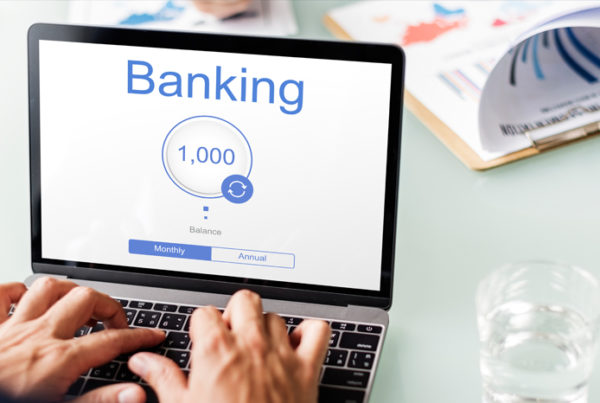The way we use money has undergone a sea-change. After several false starts, financial services and mobile connectivity have forged a mutually beneficial relationship. According to industry estimates, the volume of global mobile transactions is expected to witness 35 per cent annual growth until 2017, to be valued at $721 billion. While these stats are no doubt impressive, what’s even more so is the underlying message-opportunities galore for merchants!
But, mobile-based payments have been around for a while now. So, why is it still in the limelight? Well, while the technology may be considered old hat, the interesting bit is how merchants are leveraging this medium. In a nutshell-besides doing away with the inconvenience of handling hard cash, mobile-based payments are a new channel for the retail giants to connect with customers.
How? Welcome to a new era, where a mobile device is used not just for snapping selfies but also for sending and receiving information and supporting product-specific applications. In retail-speak, this enables the merchant to send promotional offers to customers with a higher chance of hitting the bulls-eye every time. While making a convincing sales pitch is in the textbooks of Marketing 101, every merchant worth his salt is adding a new dimension to this-connected, customized and real-time marketing.
So, mobile digital wallets have emerged as the new poster boy of mobile payments. What makes this medium so special is the fact that it facilitates payments (mobile or otherwise) while simultaneously enabling streamlined delivery of value added services (VAS) before, during and after the actual sale. Such frills may come in the form of discount coupons that can be automatically redeemed at the point-of-sale- a win-win situation for both merchants and customers. The former get a cost-effective channel to test new products and price points, whilst driving in-store sales more efficiently than with physical coupons. Customers receive relevant and personalized offerings delivered directly to their mobile wallets. This allows brands to follow up on and pinpoint campaigns – right down to the individual level. This and more is setting mobile wallets apart from the herd.
Merchants, beware, it can get a bit tricky, though. One cannot write mobile digital wallets off as a panacea for all payment-related issues. Well, not just yet, anyway. Back to Marketing 101, the first step is to get customers interested in the product. Industry studies suggest that customers are more likely to adopt a mobile wallet offering that ensures monetary savings, improved security, convenience, or increased loyalty offerings. Of these, mobile-driven loyalty is deemed as the factor with the greatest potential to drive consumer adoption of mobile payments. This is because the absence of a mobile loyalty platform embedded into the mobile payment will mean that the wallet will offer few benefits over a plastic card payment. Sample this-industry reports suggest that close to 89 per cent of customers hold at least one merchant loyalty program card. That ought to get retailers to sit up and take notice!
Starbucks is a live example of how important mobile-driven loyalty is. The company launched its mobile wallet service in 2011 and has net over 10 million customers so far. That’s a lot of coffee! The secret sauce of its mobile wallet is like so- Starbucks mobile wallet users earn “stars” for each purchase which they can redeem for free drinks, food or refills. The Starbucks app displays a QR code which the barista scans as payment for the mobile wallet user’s purchase. The figures speak for themselves-Starbucks currently processes 5 million weekly mobile payments, up from 2 million a week at the end of 2012. A third of Starbucks’ North American sales are funded by one of the store’s prepaid cards, with the mobile app itself processing 10 per cent of this.
Loyalty aside, the second selling point-and this is where a sharp and savvy advertising campaign will come in handy-is that the wallet ought to be positioned as a convenient, contextually relevant and compelling product. Customers have to be convinced that Big Brother isn’t watching, especially since the fact that companies have and use data related to their transactions is common knowledge. Thirdly, it shouldn’t don the mantle of spam messages. Customers look for transactions that promise personalized content and services delivered in context. They want relevant information, accessible at smart touch-points throughout the sale journey. This contextual relevance creates greater efficiency and enables smarter transactions for consumers and merchants. Finally, the challenge of harnessing, analyzing, and acting upon that data to deliver value to consumers has to be surmounted.
While the jury is still out on how this product will ultimately fare, it would be interesting to take stock of a few of the more popular wallet apps.
Location-Aware Services
Coupons are passé. Now, armed with mobile wallets, retailers are trying to entice customers based on their proximity to a physical retail store. This includes the whole hog-from in-store promotions to reminders about existing offers.
Comparison Shopping
Needless to say, sales and discounts are the safest bet to attract a customer’s attention. So, obviously, a mobile wallet service that helps customers save money is most likely to gain traction. For example, mobile application ShopSavvy permits customers to scan barcodes and use keyword-based searches to identify deals and consumer reviews on a wide range of products from local retailers.
Virtual Receipts
By deploying mobile wallet technology, retailers can keep track of their receipts and streamline the process of returning or exchanging a product. Receipts can be printed wirelessly or emailed to customers, thereby enabling a faster checkout process.
To sum up, while mobile wallets have, so far, proved to be a worthy and weighty technology to simplify payments, let’s not celebrate just yet. The possibilities are limitless, yes, but as the saying goes, “With real power come great responsibilities.” Is mobile wallet up to it? Only time will tell.






